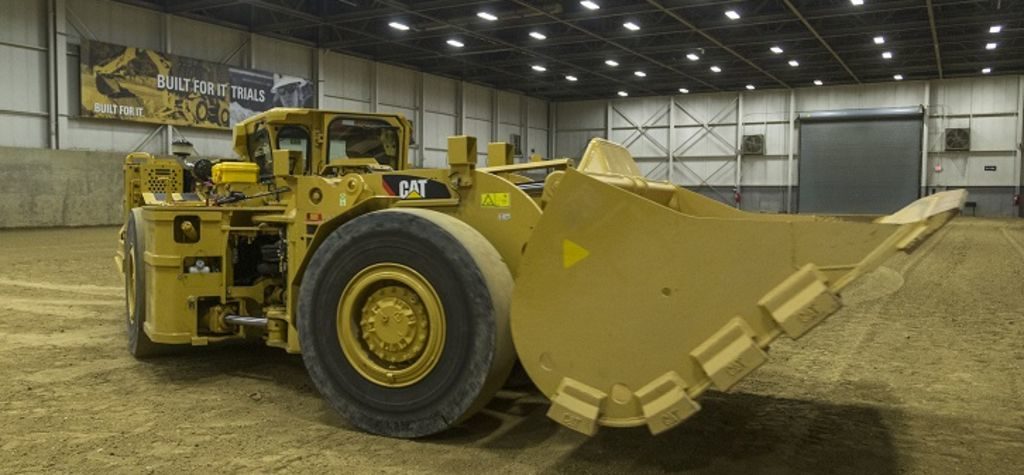Earlier this month during a talk focused on developments in Caterpillar’s underground division, more details emerged of the proof of concept battery-electric trial carried out underground earlier this year on its R1300G LHD.
Susan Gaugush, Commercial Manager for Caterpillar Underground, said in tests at a mine in Sudbury, eastern Canada, against its diesel-equivalent, the R1300G had surpassed the company’s expectations.
“What we were expecting versus what we got was very interesting,” she told a group of journalists, including IM, at the company’s Tinaja Hills facility in Tucson, Arizona.
The trial involved the LHD performing a brake test (to simulate driving the bucket into the muck pile), travelling forward, stopping and performing the bucket cycle (lifting and lowering) and reversing back to the brake test location. This was repeated for 30 cycle runs.
The company assumed the results would show a three times reduction in terms of heat generation when comparing the battery-electric LHD to its diesel counterpart. “We actually saw a seven-and-a-half times improvement,” Gaugush said.
Also, the energy cost was ten times less for the battery LHD based on the equivalent duty cycle, coming in at $3.66/run compared with the diesel machine’s $37.50/run.

The company is still a good few years away from launching a battery-electric machine as it looks to tackle the industry need to improve safety, reduce ventilation requirements and operate at increasing depths, but its initial trial bodes well for future developments.
Gaugush said the company had taken a lot of what Caterpillar has applied in other parts of its business – in track-type tractors, electric-drive haul trucks and micro-grids, for example – and “leveraged it into a battery-electric motor”.
While Cat and Gaugush did not want to reveal what battery chemistry the company was using for this trial – explaining this could change in the future as the sector continues to evolve – she did say the trial involved the use of fast-charging technology, which saw the loader’s battery go from a 20% capacity to full charge in around 15 minutes.
The company’s aim is to eventually create a battery-electric loader that can work continuously for some four hours before requiring re-charge, while it hopes to remove the need for continuous battery change-out through an underground charging system.
Gaugush said there was potential for the company to apply the testing process it used on this LHD to underground truck technology, but Cat, which has partnered up with at least one undisclosed company on this project, is currently pursuing further test work on the R1300G.
Jay Armburger, Caterpillar’s Product Manager for Underground Technology, previously said underground electrification will bring with it substantial industry benefits, not just a reduction of greenhouse gases.
“Mining operations are going deeper and deeper in search of larger reserves and higher-grade ore,” Armburger said. “With that depth comes significant challenges with ventilation and temperature management. It takes a lot of capital investment to put in the infrastructure for ventilation systems and air conditioning systems. Battery electric machines really bring significant cost savings to these customers.”
One customer working with Caterpillar on this solution estimated a $40 million or more saving on capital expenses by reducing the volume requirements of ventilation shafts, he said. “Their vent reduction requirements can be reduced by 40%, and inlet and return shafts can be reduced up to 24%.”











